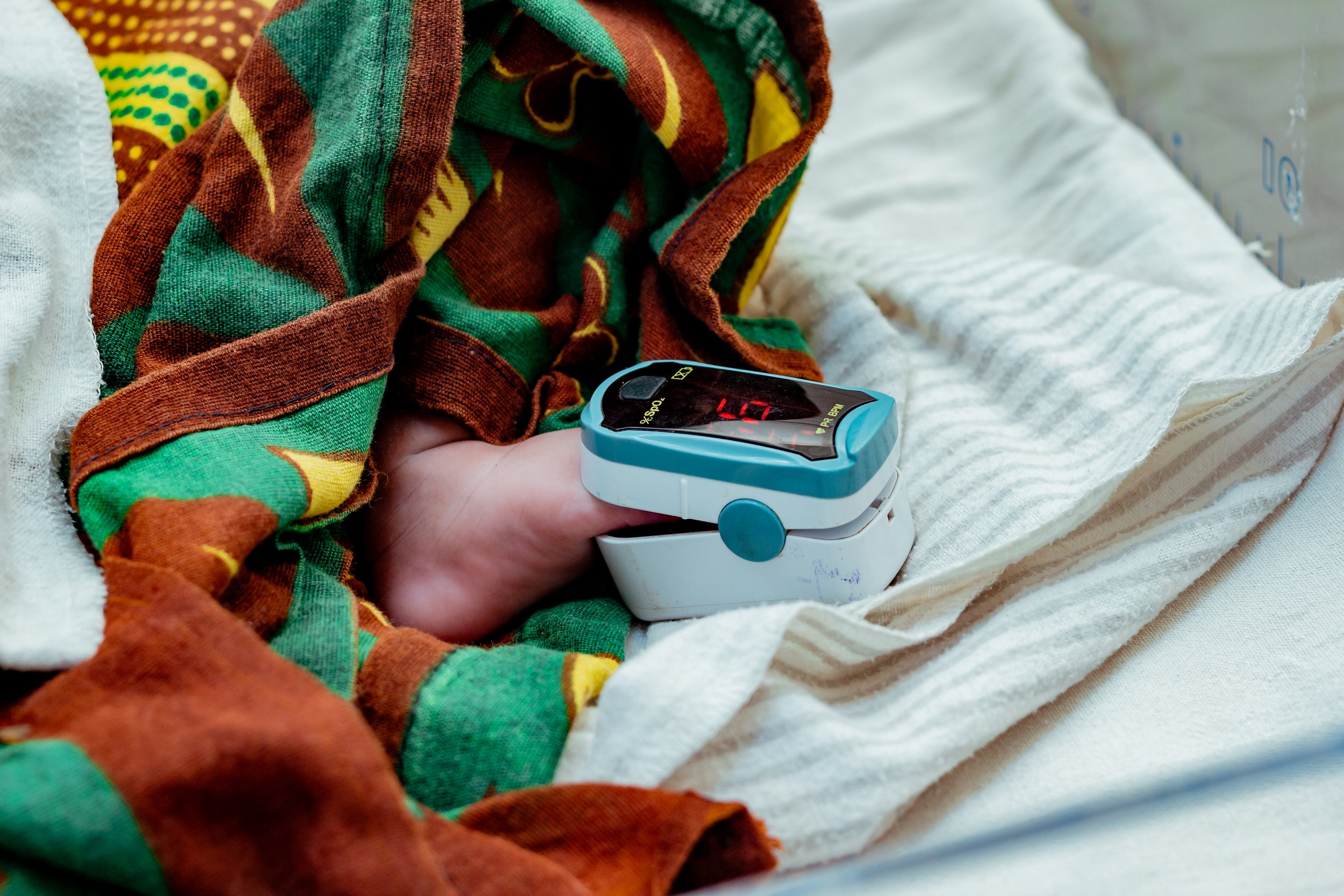Saving Lives with Essential Emergency and Critical Care (EECC): Baby Lilian’s Story
Baby Lilian was born in a hospital in rural Tanzania. One hour after birth, she was struggling to breathe. A nurse trained in Essential Emergency and Critical Care (EECC) quickly assessed her condition and found that she was in respiratory distress. Her breathing was dangerously fast, and a pulse oximeter revealed that her oxygen levels were critically low. Acting swiftly, the nurse placed oxygen tubing in Lilian’s nose, delivering the life-saving oxygen she desperately needed. Within moments, her breathing and oxygen levels began to improve.
Baby Lilian with oxygen tubing
Breathing difficulties at birth are common, yet without timely intervention, they can be fatal. Lilian’s survival was not a matter of expensive technology or specialist care—it was due to simple but effective EECC interventions. If the nurse had not been trained in EECC, if the hospital had lacked essential resources like a pulse oximeter and oxygen cylinder, or if the hospital’s setup had not allowed for close monitoring of newborns, Lilian’s story could have had a tragic ending. Instead, EECC worked. With continued skin-to-skin care from her mother, regular monitoring by nurses and doctors, and the right emergency response, Lilian made a full recovery. Just two days later, she was ready to go home to meet her eager siblings.
Baby Lilian’s Pulse Oximeter
The Power of EECC in Saving Lives
Lilian’s case is not unique. Every day, millions of people around the world face life-threatening emergencies—newborns struggling to breathe, mothers with severe bleeding after childbirth, and adults with pneumonia or sepsis. Many of these emergencies can be managed with timely, low-cost interventions like those provided through EECC. EECC focuses on simple but essential actions:
Monitoring vital signs to detect danger early.
Providing oxygen therapy to patients with breathing difficulties.
Administering intravenous fluids to treat dehydration and shock.
Simple airway management to keep airways open.
Training healthcare workers to recognize and respond to critical illness quickly.
These interventions do not require high-tech intensive care units. They can be implemented in any hospital or clinic, even in resource-limited settings, making them one of the most cost-effective ways to save lives.
The Need for Investment in EECC
Despite its proven effectiveness, EECC is still not available in many hospitals worldwide. A recent study found that in 39 low- and middle-income countries, only 25% of primary hospitals had reliable access to oxygen. Without essential equipment and trained staff, preventable deaths continue to occur.
Ensuring that every health facility is equipped with basic EECC resources is a simple yet powerful step toward reducing global health inequalities. By investing in EECC, we can make sure that every baby like Lilian, every mother, and every critically ill patient has the best possible chance of survival.


